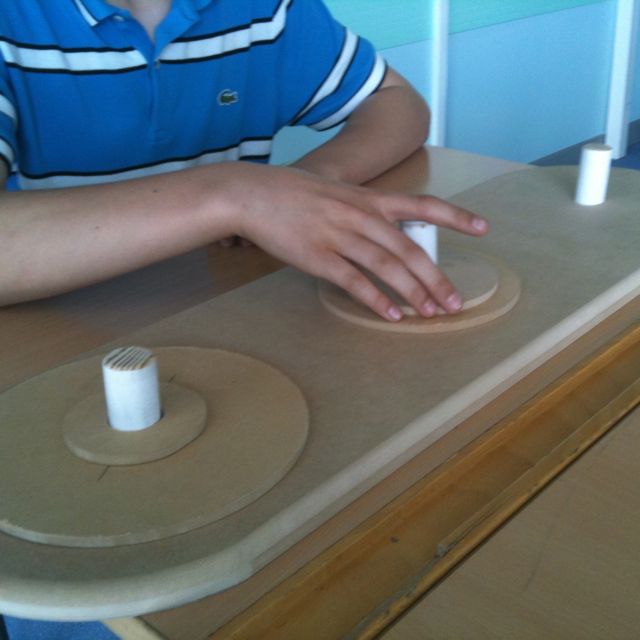Tower of Hanoi TN
Teacher Notes
 This is a terrific activity that is instantly engaging, approachable for everybody and goes on to reveal a great example of an exponential sequence. If you have never tried to do it yourself then you should! Most people are keen to have a go and are sure they can find the fastest way to solve the puzzle. What follows is often a great buzz as people put forward solutions, conjectures and explanations for what is happening. Students are quickly debating the points with each other and collectively arriving at some useful data collection. Often by themselves, but sometimes with a bit of help from their teacher, students arrive at the generalisation of the exponential sequence 2x-1 and are then excited by the power of the exponential. The idea that you already require over 1000 moves to shift 10 disks is counter intuitive. The discovery that each new disc approximately doubles the number of moves required is powerful, especially when it can be explained by looking at the discs.
This is a terrific activity that is instantly engaging, approachable for everybody and goes on to reveal a great example of an exponential sequence. If you have never tried to do it yourself then you should! Most people are keen to have a go and are sure they can find the fastest way to solve the puzzle. What follows is often a great buzz as people put forward solutions, conjectures and explanations for what is happening. Students are quickly debating the points with each other and collectively arriving at some useful data collection. Often by themselves, but sometimes with a bit of help from their teacher, students arrive at the generalisation of the exponential sequence 2x-1 and are then excited by the power of the exponential. The idea that you already require over 1000 moves to shift 10 disks is counter intuitive. The discovery that each new disc approximately doubles the number of moves required is powerful, especially when it can be explained by looking at the discs.
How?
The activity is beautifully simple to run. The following is some practical advice about how to go about it and prepare.
Starting and finishing
- I really like to use a real version of the game like the big one in the picture above. There is something more satisfying about moving the pieces yourself. One real one for demonstration and sharing is probably enough, although it is not difficult to cut out some different size discs from paper to simulate the problem either.
- Thereafter, and if computers are readily available, the computer simulation for the problem is really useful. If computer access is limited the teacher could project their screen and students could take turns.
- There is a worksheet provided, but it is not essential to use it. There is a danger in providing too much structure to investigations like these. Sometimes following a structure takes ownership away from students and stops them finding their way through the problem. Obviously every teacher and every student is different and so this one is up to the teacher.
Time needs
This activity may take about 45 minutes, but it is the nature of such investigations that it could be more and it could be less. If a bright spark gets there quickly then its good to have an extension question up your sleeve, such as 'If we knew how to do it, what is the biggest number of discs we could move from one side to the other in our lifetimes?'
What to expect?
The following paragraph outlines some of the possible sticking points that teachers might want to be prepared for
- It is really important to make sure students arrive at the correct answers for the least number of moves. If they don't then they can't see the sequence. Once students have a system for solving the puzzle, it all hinges on the first move. Focussing on this can lead to some great conversation about planning a route through a problem.
- The online simulations for this puzzle provide solutions very quickly and can quickly spoil the investigation. As such it is worth warning students about this and emphasising the need to solve problems themselves. Once they have made conjectures, the simulation is excellent for testing them.
- Once students get some data, they are quick to spot a term to term pattern and the doubling notion. Moving from this to expressing the exponential is a bigger leap.
Good Luck!
